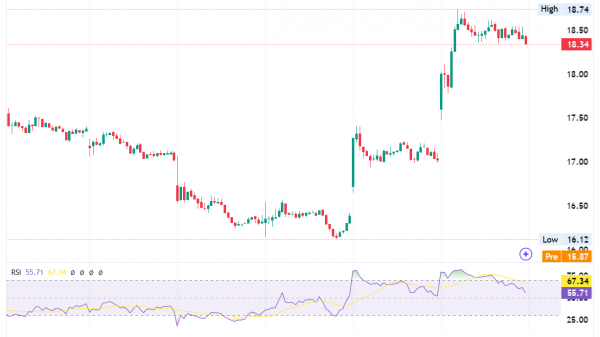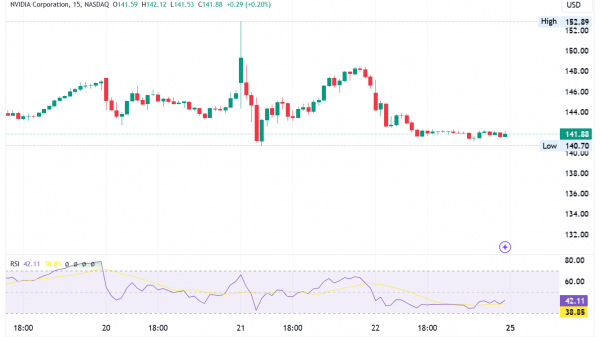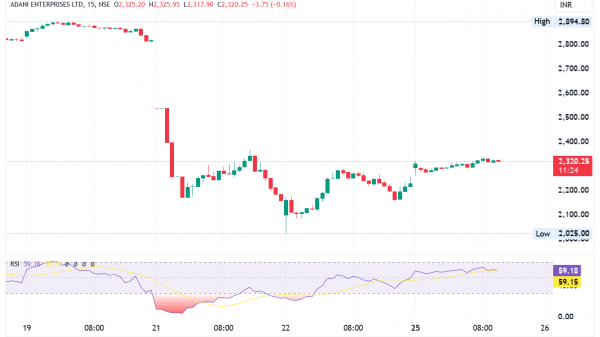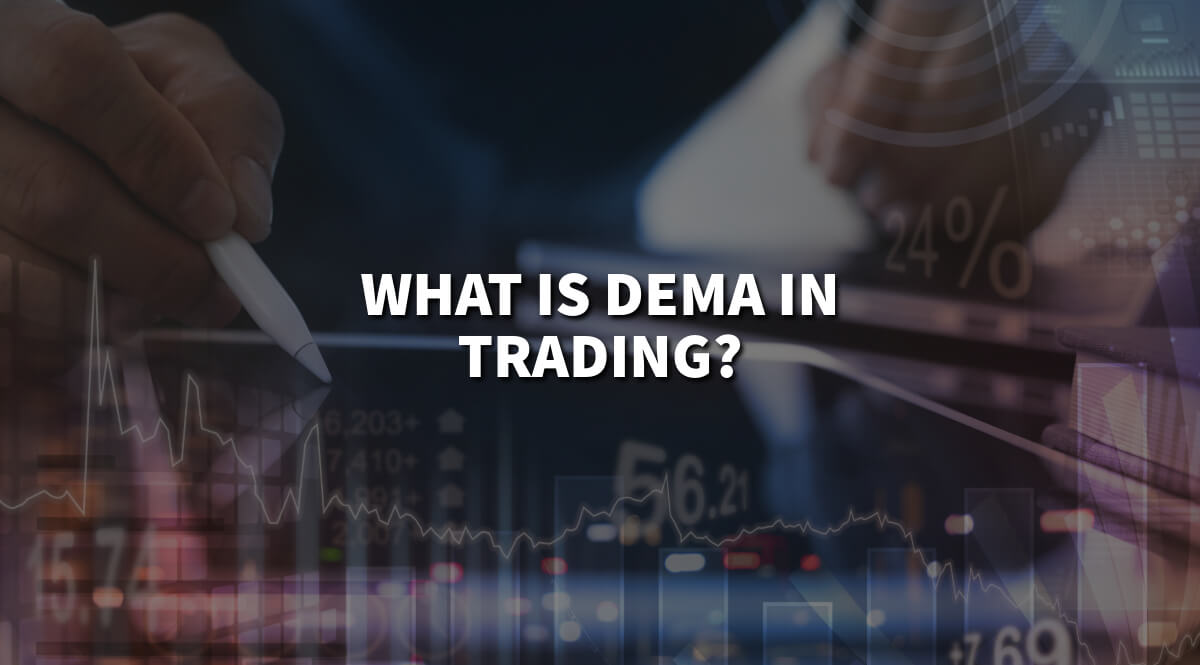What is Dema in Trading – Get all the essential information.
Key Takeaways:
DEMA is a technical tool that looks at recent price changes. This helps to reduce delays compared to traditional moving averages.
It helps traders spot uptrends and downtrends quickly, providing earlier signals for potential buy or sell actions.
Using multiple of it with different timeframes can help identify trading signals when the lines cross.
It can lead to overtrading by generating too many signals and may be less reliable in choppy markets. It’s best used with other analyses like price action and fundamental analysis.
Have you ever thought about what Dema in trading means? Why does it seem that numerous traders and investors in 2024 have started trading this particular “Dema”? First and foremost, this term stands for the double exponential moving average.
It represents a specific and, nowadays, extremely popular technical indicator that serves for the reduction of results that traditional moving average produces. What is interesting about this indicator is that traders adore using it to minimize the “noise” quantity.
This noise quantity could alter the price chart moves. To understand DEMA trading, let’s start with the basics.
What is DEMA in the Stock Market?
In the stock market, the Double Exponential Moving Average (DEMA) refers to a specific technical indicator that traders mostly use to track the average of the stock price.
They do so with more weight given to recent price changes. It’s crucial to note that it makes it more responsive to current price movements than other moving averages.
Understanding DEMA trading – explanation by a professional
DEMA, or Double Exponential Moving Average, helps investors and traders understand the direction of a stock or asset. They need to be aware of this indicator.
The indicator helps people see once the particular price is going up by looking at when it falls below the average. Patrick Mulloy talked about this in a 1994 article on using faster-moving averages. Also, it identifies the downtrend and vice versa, while the price is below.
Remember that a trend change happens once the price cut across the average.
Two growingly moving averages
The Double Exponential Moving Average in DEMA trading uses two EMAs to reduce chart lag.
In 1994, Patrick Mulloy explained how to smooth data using faster-moving averages. It was published in a 1994 magazine called “Technical Analysis of Stocks & Commodities “.
What is the DEMA Indicator?
The Double Exponential Moving Average EMA indicator represents a technical tool designed to makemake moving average calculations more responsive.
With that responsiveness, this indicator reduces the delay in traditional moving averages.
What is the formula of DEMA trading?
DEMA=2×EMA(N) − EMA of EMA(N)
In the formula above, N stands for the “Look-back period”.
How are you going to calculate the DEMA?
Suppose you’re interested in calculating the Double Exponential Moving Average. Here are the crucial steps in doing so:
Select any of the given evaluation periods. You can select either 5, 15, or one hundered periods.
Determine the EMA for that timeframe. This is called EMA(N).
Implement it, observating window to EMA(N), creating a smoothed EMA.
Double the EMA(N).
Deduct the smoothed Exponential Moving Average.
How to Read the Double Exponential Moving Average?
Some beginner traders aren’t still sure about how to read the Double Exponential Moving Average. However, reading it is quite simple if you follow these tips:
An uptrend happens when the asset’s price is above the DEMA line and the DEMA line is rising. This shows that the price is going up.
The downtrend is once the price is below the Double Exponential Moving Average and the DEMA line is moving down, then. It suggests that the price is in a downtrend.
Using Multiple DEMAs
Remember, some traders use multiple DEMAs with different timeframes on one chart for better trading opportunities. The main reason for doing so is to spot trading signals more easily once the lines cross.
Here is a good example of it:
A buy signal occurs when a 20-period DEMA crosses above a 50-period DEMA. This could indicate a good time to make a purchase.
Sell Signal: It may be a good time to sell when the short-term DEMA crosses back below the long-term DEMA.
Support and Resistance
Double exponential moving averages can show where prices may stop and change direction. They indicate support and resistance levels in trading.
Nonetheless, this is only sometimes not reliable. If you notice that it has shown support or resistance in the past, it might do so again. Conversely, if not, it probably won’t be helpful for this purpose.
Who Uses Double Exponential Moving Averages and Why?
Typically, short-term traders are the primary users of the DEMA. Day and swing traders globally prefer Double Exponential Moving Averages because they react faster to price fluctuations than conventional moving averages.
Long-term investors, who trade less frequently, might find traditional moving averages more beneficial. It’s important to note that these swing and day traders favor the DEMA for two main reasons:
To assess their strength
To mark upward or downward trends.
They search for the prices that are either above or below the DEMA. Sometimes, they utilize numerous Double Exponential Moving Averages with different timeframes to watch for crossing points.
Remember that, like any moving average, a Double Exponential Moving Average can indicate price support or resistance.
That overall assists in identifying points where a trend could either pause or reverse.
What Is the Main Difference Between a Simple Moving Average and a DEMA?
Those wondering how the simple moving average differs from a Double Exponential Moving Average (DEMA) should know that DEMA is like the improved version of a Simple Moving Average (SMA).
Here’s how they differ:
Simple Moving Average (SMA)
This is the average price of an asset over a specific period. The longer the period, the slower it reacts to price changes, showing a delay or “lag.”
Double Exponential Moving Average (DEMA)
On the other hand, DEMA is a more advanced version that reduces this lag.
It reacts faster to price changes, which enables all motivated traders to an earlier signal when the price direction of an asset is about to change.
What are the downsides of the DEMA?
Like in every indicator or trading strategy, there are also some downsides that you should be aware of before using it.
In this context, the disadvantages of Double Exponential Moving Averages (DEMA) could be as follows:
Moving averages offer restricted insights when an asset’s price is unpredictable or range-bound, as no reliable trend can be determined. Furthermore, the price often fluctuates around the DEMA.
Although the DEMA’s advantage lies in its capacity to minimize lag, this can also be a drawback. Remember that reduced lag helps traders exit positions more easily, thereby minimizing losses. However, it can also result in overtrading by generating too many signals.
Traders may sell too soon
Using this indicator has a downside. Traders may sell too soon. This could cause them to miss out on bigger opportunities.
This is especially true if the trend continues. Thus, it’s best to utilize the DEMA alongside other analyses, such as:
Price action
Fundamental analysis.
Bottom line
In conclusion, when it comes to the Dema trading, you should remember the following:
The Double Exponential Moving Average (DEMA) represents one of the most popular technical indicators nowadays. It helps traders minimize noise and lag, making it more responsive to recent price changes.
Nonetheless, it has strengths and weaknesses that should be understood for effective use. So, use it wisely, along with other helpful trading tools!
The post What is Dema in Trading – Get all the essential information. appeared first on FinanceBrokerage.


































